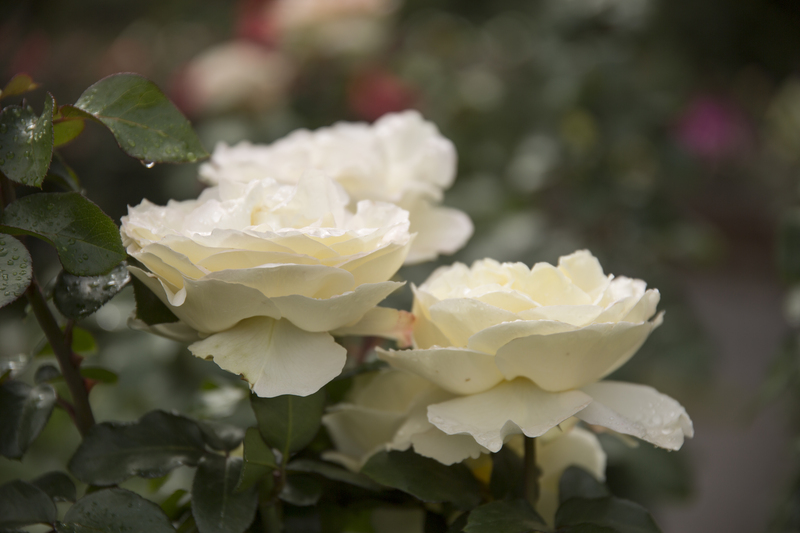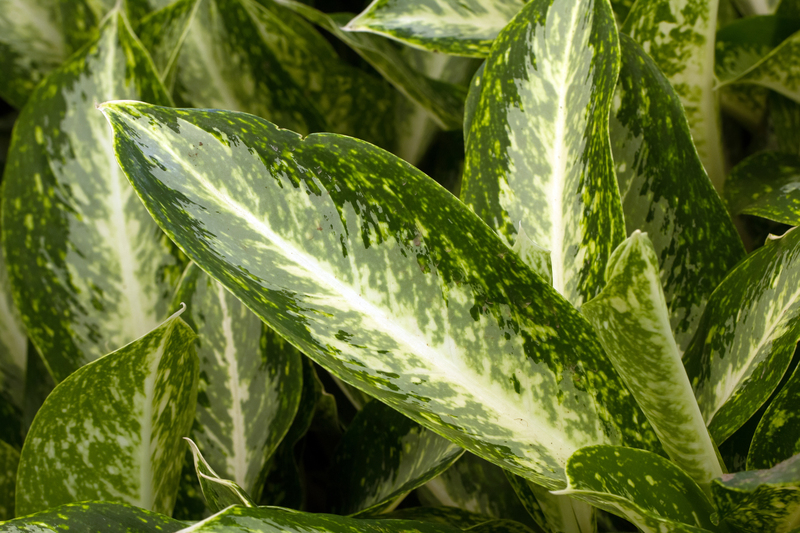Comprehensive Tips for Sustaining a Weedless Garden
Posted on 27/06/2025
Comprehensive Tips for Sustaining a Weedless Garden
Every gardener dreams of a vibrant, healthy landscape free from the suffocating grip of weeds. Achieving and maintaining a weed-free garden isn't just about appearances--controlling these persistent pests also helps your desired plants thrive by eliminating competition for essential resources. In this article, we'll share expert tips and effective strategies for creating and sustaining a garden virtually untouched by weeds. From initial garden preparation to consistent maintenance, you'll learn the most powerful tactics to keep your garden weed-free year-round.

Understanding Weeds: Why Weeds Invade Your Garden
Before diving into specific tips, it's essential to grasp why weeds infiltrate gardens. Weeds are opportunistic plants that quickly colonize disturbed, bare, or nutrient-rich soil. They compete with garden plants for:
- Water
- Sunlight
- Nutrients
- Space
Beyond competition, weeds may harbor insect pests and diseases, further threatening your garden's health. Understanding a weed's biology helps in developing more strategic, long-term garden weed prevention measures.
Prevention: The Foundation of a Weedless Garden
Start with a Clean Slate
Creating a weedless garden begins before you plant anything. Take these preparatory steps:
- Clear the Area: Remove all existing vegetation, including roots. Be meticulous--leftover root fragments can regrow.
- Use Smothering Techniques: Lay down thick cardboard or heavy-duty landscaping fabric for several weeks to suffocate persistent perennial weeds.
- Soil Solarization: For stubborn infestations, cover moist soil with clear plastic during hot weather to "cook" weeds and their seeds.
Choose High-Quality Mulches
Mulching is one of the most effective methods to prevent new weeds from germinating and to block sunlight from reaching existing weed seeds. High-quality mulches also regulate soil temperature and conserve moisture. Consider these mulch types for weed control:
- Organic Mulch (e.g., shredded bark, straw, compost): Improves soil health as it breaks down.
- Inorganic Mulch (e.g., landscape fabric covered with gravel): Offers longer-lasting control, best for paths and ornamental beds.
Apply mulch in a thick layer (2-4 inches), making sure not to pile it directly against plant stems.
Install Weed Barriers
When establishing new beds, consider using professional-grade landscape fabric or biodegradable weed barriers. These materials create a physical shield, making it difficult for weeds to penetrate the surface. Top with a decorative layer of mulch for maximum effectiveness and aesthetic appeal.
Cultivation Practices for a Weed-Free Vegetable or Flower Garden
Space Plants Strategically
Dense planting leaves little room for weeds to take hold. By overlapping plant canopies, you deprive weed seeds of the sunlight they need to sprout. When designing your beds:
- Follow recommended spacing--slightly tighter groupings can be beneficial.
- Use ground covers and low-growing perennials to fill bare spots.
Water Only Where Needed
Direct water to plant roots with soaker hoses or drip irrigation. When you avoid watering the entire bed surface, you starve stray weed seeds of the moisture required for germination. This simple tactic greatly aids in sustaining a weedless garden.
Avoid Disturbing Dormant Weeds
Weed seeds lurk throughout garden soil, often remaining viable for years. Deep digging, rototilling, and aggressive hoeing can inadvertently bring buried seeds to the surface. Limit soil disturbance by:
- Using "no-dig" or minimal-till gardening methods where possible.
- Planting into established mulch layers rather than bare earth.
Routine Maintenance: The Key to a Weedless Garden
Be Proactive with Weed Removal
The most effective way to keep your garden completely weed-free is to pull weeds as soon as you spot them. Early removal prevents weeds from seeding and multiplying. Follow these best practices:
- Pull after Rain: Weeds are easier to uproot in moist soil, minimizing root breakage.
- Use the Right Tools: Tools like hand weeders, hoes, and dandelion forks make the job easier and more efficient.
- Remove Entire Roots: Especially crucial for perennial weeds that resprout from root remnants.
Inspect Regularly
Make weeding part of your regular garden routine. Quick, weekly checks will keep small problems from becoming infestations. Pay special attention to:
- Bed edges and pathways
- Under dense foliage
- Freshly planted or disturbed areas
Deadhead and Dispose of Weeds Properly
If you pull a weed after it has flowered or set seed, be sure to dispose of it in the trash, not your compost--even hot compost may not destroy all weed seeds. This prevents accidental reintroduction to your garden beds.
Advanced Techniques for Permanent Weed Reduction
Plant Living Mulch and Ground Covers
Living mulch--low-growing, spreading plants--can outcompete weeds while adding beauty and biodiversity. Effective options include:
- White clover
- Creeping thyme
- Ajuga
- Sweet woodruff
Choose species compatible with your climate and desired garden aesthetic.
Use Cover Crops in Off-Seasons
For vegetable gardeners, cover crops (like rye, oats, or hairy vetch) smother weeds between plantings and replenish soil nutrients. Mow or cut down the cover crop before it sets seed, and compost or incorporate the residue as a green manure.
Solarize or Sheet Mulch in Stubborn Areas
Solarization utilizes heat from clear plastic to kill deep-rooted weeds and dormant seeds. Sheet mulching, or "lasagna gardening," layers cardboard, compost, and mulch to suppress and decompose weeds under a planting area. These methods are highly effective for reclaiming heavily infested spaces.
Natural Herbicides and Organic Alternatives
If manual methods fail or are too time-consuming, non-toxic controls can help maintain a weed-free landscape:
- Boiling Water: Pour directly on weeds in cracks or along paths.
- Vinegar Solutions: Horticultural vinegar (20% acetic acid) burns foliage, but may need repeated applications.
- Corn Gluten Meal: Prevents weed seeds from germinating (works best pre-emergent, not effective on mature plants).
Always use caution; even natural herbicides can damage garden plants if misapplied.
Smart Design Tips for a Weedless Yard and Landscape
Define Edges and Boundaries
Weeds often invade from lawn or wild areas. Install physical barriers such as:
- Steel or plastic edging
- Brick or stone borders
- Wide mulched paths
This creates a neat, appealing look and limits weed creep.
Limit Open Soil
Wide swaths of exposed soil are an open invitation for weed seeds. Wherever possible, cover bare earth with:
- Dense plantings
- Mulch
- Hardscaping (gravel, paving)
Integrated Weed Management: Long-Term Success
Integrated Weed Management (IWM) combines cultural, mechanical, organic, and chemical controls for comprehensive, sustainable weed suppression. Even the best techniques can fail if used alone; variety is the key to long-term, weed-free success.
Key Elements of IWM:
- Diversified planting and crop rotation
- Routine monitoring and quick response
- Appropriate mulch and barrier use
- Judicious use of safe herbicides where necessary
Common Mistakes to Avoid in Weed-Free Gardening
- Letting weeds go to seed ("One year's seeding means seven years' weeding!")
- Using low-quality or contaminated mulch (may introduce more weeds)
- Neglecting bed edges and garden perimeters
- Over-cultivating or disturbing soil too often
- Not inspecting regularly, allowing small problems to escalate

Frequently Asked Questions
Is it possible to keep a garden completely weed-free?
While sustaining a completely weedless garden is a challenge, following these best practices will drastically reduce weed problems and keep maintenance manageable.
How often should I mulch my garden beds?
Replenish mulch annually or as needed, maintaining a depth of 2-4 inches for effective weed suppression.
Are chemical weed killers safe?
For organic gardens, mechanical and cultural controls should be prioritized. If you must use herbicides, choose targeted, selective products and avoid broadcasting chemicals where they may harm beneficial plants or soil life.
Can I compost weeds?
Compost only young, non-seeding annual weeds. Seed-bearing or perennial weeds may regenerate in your compost pile or later in garden beds.
Conclusion: Cultivating a Lasting Weed-Free Oasis
Creating and maintaining a weedless garden is an ongoing journey--but with the right tools, time, and a comprehensive strategy, it is entirely achievable for any gardener. Remember to:
- Prepare beds thoroughly from the start
- Utilize quality mulches and living ground covers
- Practice regular, attentive maintenance
- Adopt integrated management for stubborn weeds
Commit to vigilance, and your lush, thriving garden will reward you with beauty, productivity, and far less back-breaking work. Start applying these weedless gardening tips today and enjoy the benefits all season long!

